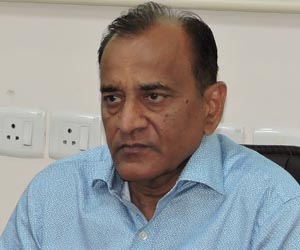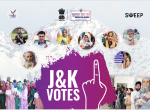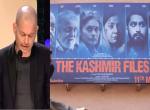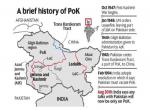The furore over Israeli filmmaker Nadav Lapid’s condemnation of The Kashmir Files may have died down, but it does recall to memory the case of yet another controversial film, Kissa Kursi Ka. Of course, there is hardly any comparison between the two. The latter failed to get released while The Kashmir Files was not only released but also recorded a resounding box office collection. Made on a budget of Rs 15 crore, it raked in Rs 250 crore within the first month of its release, and was a hit on the OTT platforms as well. But Lapid’s criticism, which came during the conduct of the International Film festival of India (IFFI) 2022, in Goa, that it was a ‘propaganda, vulgar film’, ought to be confronted. Kissa Kursi Ka, a political satire on Indira Gandhi-Sanjay Gandhi, is a good example to help make the distinction.
Kissa Kursi Ka’s director, Amrit Nahata, submitted his film to the censor board for certification in April 1975, just months before Emergency was imposed. When the certificate was nowhere in sight, Nahata approached the Supreme Court, which decided that the only way it could form an opinion on the issue was for the Justices concerned to see the film. A date, November 17, by which time Emergency was in operation, was fixed for the special screening. The problem, however, was that the film’s negatives had been seized by the Indira Gandhi government and destroyed. (It was said that thirteen steel trunks containing 150 spools of the film were carted to the premises of Maruti Ltd in Gurgaon in Haryana, and put to fire.) The matter, thus, remained in limbo.
After the Janata Party government headed by Morarji Desai came to power, the Central Bureau of Investigation (CBI) was asked to look into the matter. Home Minister Charan Singh was especially keen to put the previous government in the dock. In July 1977, the CBI filed a chargesheet holding Sanjay Gandhi and VC Shukla (Information and Broadcasting Minister during the Emergency days) responsible for the destruction of the negatives.
While Nahata’s case in the Supreme Court for the issue of a censor certificate came to an end once the negatives were destroyed, the matter of destruction continued to be heard in a lower court. But once the trial commenced, prosecution witnesses who had earlier accused Sanjay Gandhi, and who was on bail, for the destruction of the negatives, turned hostile and claimed that they had been pressured by the CBI to implicate him. The government then sought the Supreme Court’s intervention, seeking cancellation of bail on the ground that Sanjay Gandhi was influencing the witnesses. Sanjay’s lawyer argued that there was a threat to his physical wellbeing if he were to be arrested, but the apex court judge hearing the case said that the rule of law prevailed in the country and if any attempt of bodily harm was made, Sanjay Gandhi would be free to approach the courts. The bail was cancelled and the Congress leader surrendered.
In early 1979, a sessions court found Sanjay Gandhi and Shukla guilty and sentenced them to two years of rigorous imprisonment. They approached the Delhi High Court and the sentences were stayed. By this time, the Janata Party government, through a new law, paved the way for the Kissa Kursi Ka case to be heard directly by the Supreme Court. Soli Sorabjee appeared for the government as the Additional Solicitor General, and sought cancellation of the bail. Hot words were exchanged between Sanjay and Sorabjee. Sanjay said that he never told untruths, to which Sorabjee remarked that he (Sanjay) was the personification of untruths.
Days later, in one of the hearings of the case, Chief Justice YV Chandrachud made a sensational disclosure. He said that an advocate had approached his secretary the previous evening and said that it would be wise if the Chief Justice of India did not attend the court or took great care while doing so. The advocate concerned rose and vehemently denied the allegation. He was asked to shut up by the Chief Justice. Eventually, the court decided that no compelling case had been made out by the prosecution to cancel the bail. By the time the appeal was decided, the Janata Party government had fallen. A new Bench of the apex court heard the case and declared that there was insufficient evidence to implicate either Sanjay Gandhi or VC Shukla in the destruction of the negatives. Both were honourably acquitted.
It was reported that the few people who had watched the film before its negatives were reduced to ashes, were none too impressed by its cinematic value. It was said to be badly scripted and directed, and brazenly propagandist. It was also believed that, even if the film had been exhibited during the Janata Party days, it would have not have won the appreciation of the film-goers.
Coming to The Kashmir Files, Lapid or anyone else could have analysed it on its cinematic handling — story, script, screenplay, direction, cinematography, costumes, music, etc.— and passed an unfavourable opinion. There would not have been issues with their criticism. But Lapid went beyond his brief, calling it vulgar and propagandist. Vulgar, in what sense? And propagandist, on whose behalf?
The Kashmir Files, directed by Vivek Agnihotri, is the story of the persecution of Kashmiri Pandits during 1989-90 by the Islamists. It is based on a string of real-life incidents that have been reported and documented at length in the media over the decades. Thus, it is not a fictional telling meant to arouse communal discord between two communities. It is true that the film depicts scenes and situations in stark violence, but that again is how it happened.
An oft-levelled charge is that The Kashmir Files is one-sided — in other words, biased in favour of one group of people. There are two problems with this accusation. One, is there ‘another side’ to the persecution of Pandits in Kashmir? Did the Pandits, in retaliation, also engage in violence and bloodshed of Muslims, which was not depicted in the film? Is there ‘another side’ to the Holocaust — of the Jews killing the Nazis? The answer to both is a clear ‘no’. There is an argument that The Kashmir Files does not depict the many acts of courage by local Muslims in saving their Pandit brethren. There may have been such cases, but they were rare and certainly not the dominant narrative of those traumatic months.
The second problem with the allegation is that it presumes to tell the director what he/she must show in a film. Every director has a theme in mind and is free to explore that theme. Many films have been made that were ‘one-sided’ — Parzania and Maachis, to name two. If critics of The Kashmir Files, particularly those from the film industry, have an issue with this so-called one-sidedness, they are free to make a film that demonstrates the theme they wish to explore.
The success of The Kashmir Files took everyone by surprise. Established production houses and mega stars who believed that films sold on their names were especially rattled. It was difficult for them to imagine that a film with no star cast and with no big banner supporting it, should have clicked while those that boasted of their names, had turned into damp squibs. It was a nasty fact-check for them. They are refusing to realise that the days when films became hits entirely on their names, were over. People want films with content — good story, script and screenplay. It did not matter to the audience that a mega star exposing his six-pack abs was on the screen — if he did just that and not demonstrate even a semblance of acting prowess, and if the film had no content, the audiences would reject the film.
The Bollywood (for want of a better term) has realised in recent times to its horror that the ecosystem it has created no longer calls the shots at the box-office. The ecosystem consists of major production banners, superstars, film reviewers, PR firms and even sections of the media. This ecosystem watched helplessly as The Kashmir Files raced to success. The existence of such an ecosystem is a reality and not a figment of imagination, and quite a few actors have had the courage to openly speak about it, though many more have remained muted victims.
The fact of the matter is that films that have a connect with the country’s civilisational and cultural mood have a good chance of success. The South seems to have grasped it well. Thus on the one hand, we have the distasteful song and dance sequence in Pathan with the female actor wearing a saffron dress; and, on the other, there are films from the South such as Kartikeya 2 and Kantara, which delve into India’s cultural traditions. Both these two films have taken the audiences across the country by storm, becoming super-hits.
There are lessons to be learned. Those flogging The Kashmir Files should ponder. The Kashmir Files may not be the best film aesthetically; let others make a better one. But just one caveat: They should be honest with the persecution of and the violence unleashed on the Kashmiri Pandits, and they should have the courage to name and shame the culprits in their films.
(The paper is the author’s individual scholastic articulation. The author certifies that the article/paper is original in content, unpublished and it has not been submitted for publication/web upload elsewhere, and that the facts and figures quoted are duly referenced, as needed, and are believed to be correct). (The paper does not necessarily represent the organisational stance... More >>
Image Source: https://images.hindustantimes.com/img/2022/11/29/550x309/kashmir_files_who_is_israel_nadav_lapid_1669689034440_1669697377030_1669697377030.jpg











Post new comment